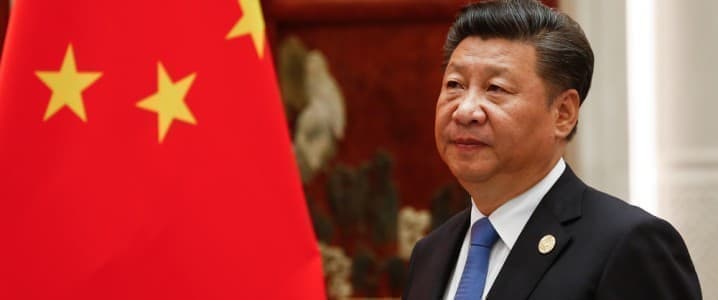Despite global supply chain challenges, trade between China and Africa rose to record levels in 2021. The increase partially reflects a shift in Chinese policy away from state-backed investments and towards trade and cooperation.
Data released recently by the Chinese Customs Agency show that Chinese trade with Africa increased by 35% last year, to a record high of $254bn.
This growth was largely driven by an increase in Chinese exports to the continent.
Going forward, volumes look set to continue growing, with trade constituting a key element in a joint plan released by Africa and China at the end of last year, during the meeting of the Forum on China-Africa Cooperation (FOCAC).
FOCAC and trade
Launched in 2000, FOCAC has given rise to an ever-closer relationship between the Chinese state and the African continent, in both diplomatic and economic terms.
However, the coronavirus pandemic prompted a change in direction.
Held in Senegal in November, the 2021 FOCAC conference saw China announce a pivot away from the state’s role as a direct financer of African projects.
This was reflected in President Xi Jinping’s pledge of $40bn to the continent – a 33% drop on the $60bn pledged at the preceding conference in 2018, and the first time that the sum committed by China every three years has decreased.
Notably, there was no concrete budget assigned to concessional lending, which has traditionally been the principal vehicle by which the Chinese state has invested in infrastructure projects.
It would seem that China envisages that trade and private investment will pick up the slack created by this downturn in state-backed funding.
The FOCAC conference also saw the launch of the 2035 Vision for China-Africa Cooperation, the first mid- to long-term cooperation plan jointly developed by the two parties.
Echoing the approach of China’s own Vision 2035, this document lays out eight areas of cooperation, among them development, trade and industry.
In terms of trade, a key element was China’s promise to work to close the trade gap by importing $300bn of African goods over the next three years.
This will be facilitated by the opening of green lanes for African agricultural exports, a speeding up of inspection and quarantine procedures, and a broadening of the number of products on which no tariff is charged.
This reflects a growing Chinese appetite for African products, with agricultural goods doing particularly well: between July 2020 and July 2021, exports of rubber, cotton, and coffee doubled.
Meanwhile, the second China-Africa Economic and Trade Expo took place in Changsha City, central China, in September last year, giving rise to the inking of projects worth some $22.9bn, according to government sources.
Nonetheless, $300bn in three years represents a relatively modest target, considering that in 2013 China imported $100bn of African goods, although totals have dropped since then. Furthermore, this figure is substantially less than that of imports from the EU.
Closing the infrastructure gap
China’s reduction of state funding may be a source of concern to African governments, given the recent importance of China in developing infrastructure projects.
According to the Centre for Global Development, between 2007 and 2020 China’s two main overseas development banks were among the three biggest lenders to the African continent.
The Export-Import Bank of China invested $20.1bn in infrastructure projects in that period, by far the highest figure. The next biggest lender was the African Development Bank (AfDB), at $4.5bn, followed by the China Development Bank, with $2.9bn.
The combined $23bn invested by the two Chinese banks is $8bn higher than the combined total of the eight other top lenders to the continent, among them the World Bank and the AfDB.
Total annual lending to Africa now stands at around $9bn annually. This is, however, still far below the amount of infrastructure funding that the continent requires.
According to estimates from the AfDB, Africa’s infrastructure investment needs come to $130-$170bn a year, with a financing gap of between $67.6bn and $107.5bn.
By Oxford Business Group
More Top Reads From Oilprice.com:
- Why China Should Want Russia’s Invasion To End
- Kazakhstan Braces For Russian Sanction Fallout
- Big Oil’s Sudden Decision To Exit Russia Comes At A High Price

















